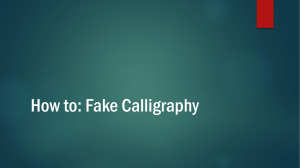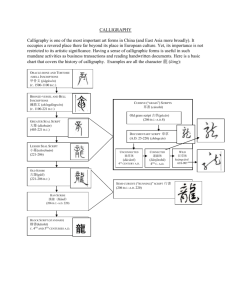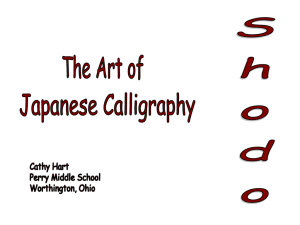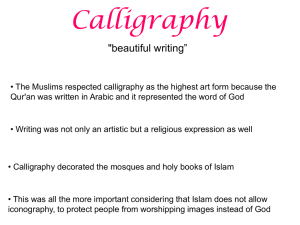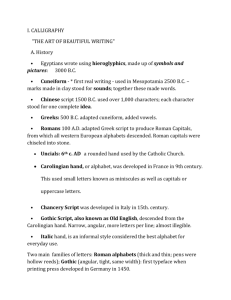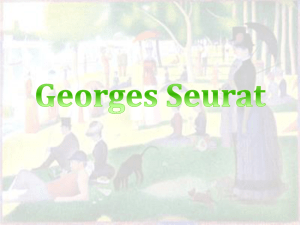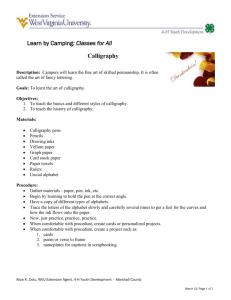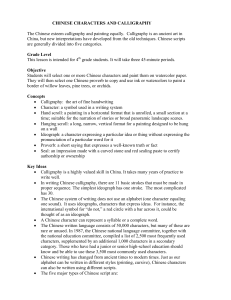美术 (Měishù) – Art 名字 (Míngzì) ______ Calligraphy
advertisement
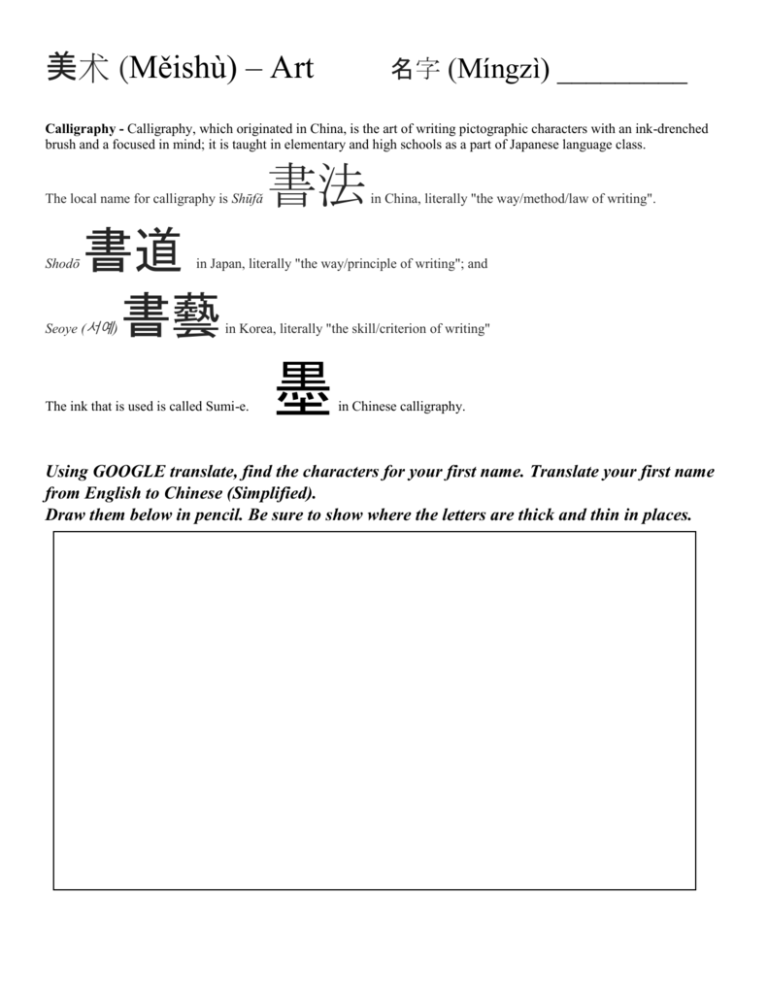
美术 (Měishù) – Art 名字 (Míngzì) _________ Calligraphy - Calligraphy, which originated in China, is the art of writing pictographic characters with an ink-drenched brush and a focused in mind; it is taught in elementary and high schools as a part of Japanese language class. The local name for calligraphy is Shūfǎ Shodō 書道 書藝 Seoye (서예) 書法 in China, literally "the way/method/law of writing". in Japan, literally "the way/principle of writing"; and in Korea, literally "the skill/criterion of writing" The ink that is used is called Sumi-e. 墨 in Chinese calligraphy. Using GOOGLE translate, find the characters for your first name. Translate your first name from English to Chinese (Simplified). Draw them below in pencil. Be sure to show where the letters are thick and thin in places. 美术 (Měishù) – Art 名字 (Míngzì) _________ There are three basic styles of shodō (Japanese calligraphy): 楷書 行書 草書 1. kaisho ( , formal or "square" – block letters) 2. gyōsho ( , "running" or semi-cursive script) 3. sōsho ( , "grass script") There are 3 basic styles of Shodo: Kaisho - Students begin by learning kaisho. This script is the basic style. The character 楷 means "correctness," and each of the strokes in each character written is drawn and placed "correctly," that is, the brush is lifted from the page for each stroke, all the strokes are written distinctly, and the characters appear basically as they would if printed by a word processor (see the example character above, meaning "dream,"). Characters produced are square and angular, with regular spacing. This style is studied first to give students a feel for correct placement and balance, as well as to provide a proper base for the other, more flowing styles. Characters written in this style are instantly recognizable. Gyōsho - Gyōsho is a more cursive script, roughly approximating normal handwriting in which strokes and, more rarely, characters are allowed to run into one another, and characters appear less angular and more round. In writing in gyōsho style the brush leaves the paper less often than in kaisho. The average educated person in China or Japan can read characters written in gyōsho style with relative ease, but may have occasional difficulty. Sōsho - Sōsho is the most cursive script. It is frequently impossible to read characters written in sōsho style without training. Entire characters may be written without lifting the brush from the paper at all, and characters frequently flow into one another. Strokes are modified or eliminated completely to facilitate smooth writing and to create a beautiful, abstract appearance. Characters are highly rounded and soft in appearance, with a noticeable lack of angular lines. Using GOOGLE translate, find the characters for your first name. Translate your first name from English to Japanese. Draw them below in pencil. Be sure to show where the letters are thick and thin in places.
